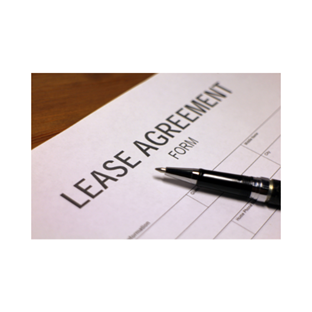
Written by Mark Kallus, Owner & Broker
RentLife® Property Management
MPM® | RMP® | TRPM® | TRLS®
Houston’s Local Property Management Experts

Navigating Occupancy Limits: What New Renters Must Understand
Navigating Occupancy Limits: What New Renters Must Understand
Renting a new home comes with various rules and regulations that you need to be aware of to ensure a smooth and comfortable living experience. One such regulation is occupancy limits. These limits specify the maximum number of individuals allowed to reside in a rental property. Understanding occupancy limits is crucial for new renters, as violating these rules can lead to disputes with landlords or property managers. This guide’ll explore the significance of occupancy limits, what they mean for renters, and how to navigate this aspect of your rental agreement.
What Are Occupancy Limits?
Occupancy limits, often referred to in your lease or rental agreement, dictate the maximum number of adults and children who can legally live in the rental property. Various factors, including local and state laws, property size, safety considerations, and the terms the landlord or property management sets, determine these limits.
Why Do Occupancy Limits Exist?
Occupancy limits serve several purposes:
- Safety: Ensuring that the property’s capacity is not exceeded helps maintain a safe living environment by preventing overcrowding and facilitating safe egress in emergencies.
- Comfort: Overcrowding can lead to discomfort, inconvenience, and strain on resources within the property, such as bathrooms and kitchen facilities.
- Property Preservation: Controlling the number of occupants helps protect the property from excessive wear and tear, reducing maintenance and repair costs.
- Adherence to Zoning Laws: Local zoning laws often regulate occupancy limits to maintain the character and quality of a neighborhood. Violating these laws can lead to fines and legal issues for landlords and tenants.
Understanding Occupancy Limits
It’s essential to thoroughly understand the occupancy limits your landlord or property management set, which should be outlined in your lease agreement. These limits are often defined in terms of the number of occupants and the number of bedrooms. For example, a lease might state that the maximum occupancy is “two persons per bedroom.”
Factors That Influence Occupancy Limits
- Local and State Laws: Local and state regulations can dictate occupancy limits, and it’s crucial to be aware of these legal requirements.
- Property Size: Larger properties may have higher occupancy limits to accommodate the space adequately.
- Amenities and Facilities: Properties with multiple bathrooms and common areas may have higher occupancy limits due to the increased capacity to support more occupants.
- Safety Standards: In some cases, safety standards may influence occupancy limits, ensuring that there is adequate egress in case of emergencies.
Potential Consequences of Violating Occupancy Limits
- Eviction: Violating occupancy limits can be grounds for eviction. Landlords can terminate the lease and require tenants to vacate the property.
- Fines and Penalties: Local authorities may impose fines on landlords and tenants for violating occupancy limits, which may breach zoning laws.
- Safety Concerns: Overcrowding can pose safety hazards, affecting both tenants and neighboring properties. It can also lead to disputes with neighbors.
Tips for New Renters
- Read Your Lease Agreement: Familiarize yourself with your lease agreement, including the section on occupancy limits. Ensure you understand the specific terms and conditions.
- Discuss with Your Landlord: If you have any questions or concerns regarding occupancy limits, discuss them with your landlord or property manager before signing the lease.
- Follow the Rules: Comply with the occupancy limits outlined in your lease agreement. This is a legal requirement and contributes to a harmonious living environment.
- Know Local Laws: Know local and state laws governing occupancy limits. Sometimes, these laws may differ from what’s stipulated in your lease.
- Open Communication: If you encounter any issues or circumstances affecting your occupancy, such as guests or roommates, communicate with your landlord or property manager to seek their guidance and approval.
Occupancy limits are integral to your rental agreement and are designed to maintain safety, comfort, and property preservation in your living environment. As a new renter, you must familiarize yourself with these limits, understand the terms set by your landlord or property management, and abide by both local and state laws and the terms of your lease agreement. Doing so can ensure a positive and lawful renting experience while avoiding potential disputes and legal consequences related to violating occupancy limits.
Finding the Right Property Manager is Important.
Are you interested in finding a property management company for your investment property? If so, you’ve come to the right place. At
RentLife® Property Management, we offer a full suite of property management services for people who own real estate in Houston and surrounding areas.
RentLife® Property Management CRMC® is the best choice for property management in Cypress, TX. We also offer rentals and property management in Humble, Katy, Spring, The Woodlands, Tomball, Conroe, Houston, Magnolia, and other surrounding areas. Contact us today at www.rentlifepm.com or call 832-562-3600.